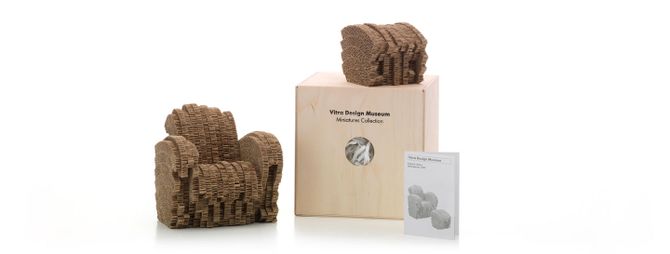製品チェアラウンジチェアソファオフィスチェアシェーズロングスツール・ベンチ彫刻的家具ミーティングチェアエアポートベンチ収納システム家具テーブルカフェテーブルローテーブルデスクデスクシステムミーティングテーブル照明時計オブジェコートラック・壁付け棚トレー・ボウル・カップアレキサンダー・ジラードアントニオ・チッテリオチャールズ & レイ・イームズバーバー・オズガビージョージ・ネルソンヘラ・ヨンゲリウスイサム・ノグチジャスパー・モリソンジャン・プルーヴェコンスタンチン・グルチッチロナン & エルワン・ブルレックヴァーナー・パントンパンター&トゥーロン修理・メンテナンスお手入れ方法製品保証プログラム新作ベストセラーギフト ファインダーオフィスチェア ファインダーラウンジチェア ファインダーカラー & マテリアルVitra Online Shop →Anagram SofaVitra Cushionsインスピレーションリビングルームダイニングルームホームオフィスキッズルームアウトドアホーム ストーリーARシミュレーションカラー & マテリアルワークスペースフォーカスミーティングワークショップクラブ オフィスシティズン オフィススタジオ オフィスダイナミック スペースホスピタリティ空港教育施設コワーキング医療施設クライアント事例A case for classicsオフィスチェアDancing Officeホーム ストーリーARシミュレーションA case for classicsカラー & マテリアルAn open house A leading space for a leading art collegeHigh comfort of low energyAn office landscape - without walls or partitionsサービス修理・メンテナンスお手入れ方法製品保証プログラムお問い合わせ組立・取扱説明書廃盤品の組立・取扱説明書コンサルティング & プランニングConsulting & planning in the VitraHausOutdoor care instructionsRepair, maintenance, overhaul at the Vitra Circle Store Campus プロフェッショナルCAD データ製品情報証明書カタログサステイナビリティ レポート組立・取扱説明書環境情報pConプランニング例カラー & マテリアル証明書ディーラー専用サイトクライアント事例Anagram SofaMikadoTyde 2 on castorsACXDancing Officeオフィスチェアマガジンストーリーインタビュー展覧会デザイナープロジェクト ヴィトラJust Do It!EVER GREENWhy the Eames La Fonda Chair was designedWhen a Sofa is more than just a Sofa: Anagram100% ヴァージンウール – 100% リサイクル可能アーカイブはまるでタイムカプセル「ヴィトラハウス」ロフト - サビーネ・マルセリスとの対話Walking the talk1000 m2 の家具おもちゃから生まれた鏡田根剛による展覧会試行錯誤 - イームズ アーカイブ コレクションヴィトラとイームズヴィトラ キャンパス展覧会ガイドツアー・ワークショップカフェ・デリショップアクティビティ建築イベントサービス案内アプリイベントニュースVitaHaus / ヴィトラハウスVitra Design Museum / ヴィトラ デザイン ミュージアムVitra Schaudepot / ヴィトラ シャウデポVitra Circle Store Campusアウドルフ ガーデンヴィトラについてサステイナビリティJobs & CareersDesign processThe Original is by VitraHistory - Project Vitra

Miniatures Little Beaver
Frank Gehry, 1986
Cardboard furniture as an inexpensive and light alternative to traditional furniture already appears as early as the 1960s. Most designs aimed at lending the cardboard the necessary stability through insert and folding techniques.
Gehry chose a different method, which gave birth to sturdy cardboard furniture like carboard sculptures: »One day I look in my office at a pile of corrugated cardboard, the material I normally used to make architecture models, and I began to experiment with it, to stick it together and to cut it into shape with a hand saw and a penknife«. Following his »Easy Edges« from 1972, a series of extraordinarily sturdy cardboard furniture with a smooth surface, from the end of the 1970s onwards Gehry once again devoted his attention to the use of corrugated cardboard as a material for making furniture.
»Experimental Edges« was the name given to unusually expansive armchairs and easy chairs with a rough, ragged- looking surface. Strips of thick cardboard usually used as the filling for door leafs were sawn or cut vertically to the corrugation lines and fashioned into solid volumes of varying shapes. Using this method, single items or small series of furniture were created, which were both furniture sculptures and surprisingly comfortable chairs and sofas.
Gehry chose a different method, which gave birth to sturdy cardboard furniture like carboard sculptures: »One day I look in my office at a pile of corrugated cardboard, the material I normally used to make architecture models, and I began to experiment with it, to stick it together and to cut it into shape with a hand saw and a penknife«. Following his »Easy Edges« from 1972, a series of extraordinarily sturdy cardboard furniture with a smooth surface, from the end of the 1970s onwards Gehry once again devoted his attention to the use of corrugated cardboard as a material for making furniture.
»Experimental Edges« was the name given to unusually expansive armchairs and easy chairs with a rough, ragged- looking surface. Strips of thick cardboard usually used as the filling for door leafs were sawn or cut vertically to the corrugation lines and fashioned into solid volumes of varying shapes. Using this method, single items or small series of furniture were created, which were both furniture sculptures and surprisingly comfortable chairs and sofas.
ヴィトラ オンラインショップはこちら
Vitra Online Shop
プロダクトファミリー
Miniatures Collection / ミニチュア コレクション
ヴィトラデザインミュージアムは、所蔵するコレクションの中から、歴史に残る家具デザインのミニチュアを20年以上にわたり制作してきました。